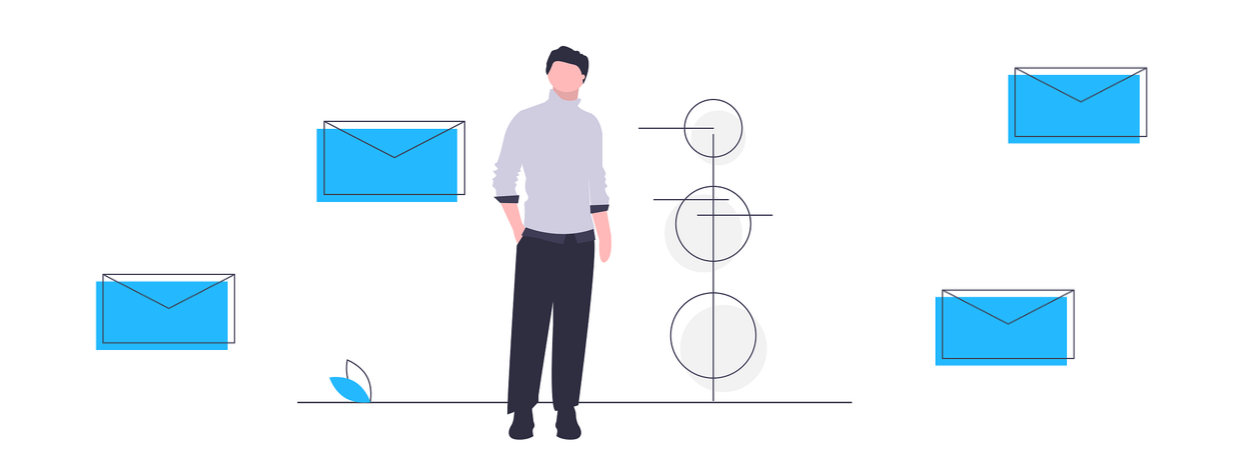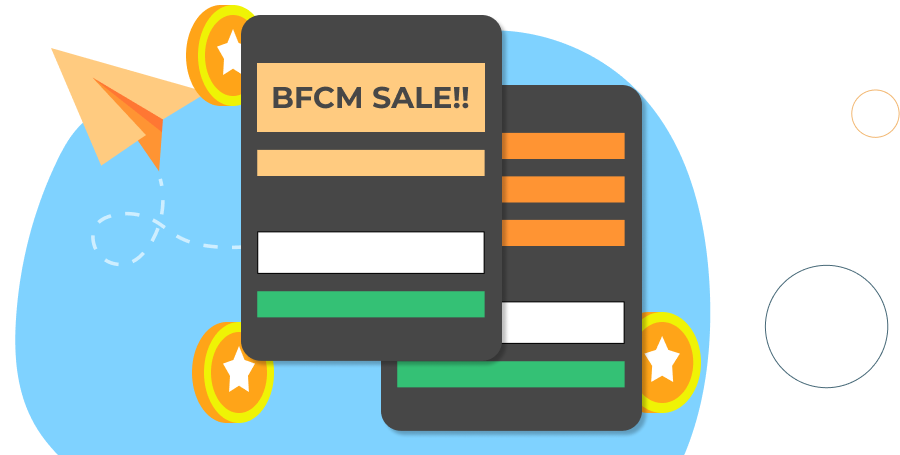Transactional emails like order confirmation emails and shipping confirmation emails are not just meant to deliver consumer information.
So, how do marketers maximize their use of transactional emails? The answer is personalization.
Consumers aren’t too keen on dull and dry emails. They prefer to receive emails that are personalized based on the merchant’s brand, tone and voice (this displays credibility.) They’re also more likely to engage with product recommendations based on browsing behaviour and past purchases.
Campaign Monitor reports that segmented and targeted emails generate 58% of an ecommerce store’s revenue. Marketers have also experienced a 760% increase in revenue from segmented email campaigns.
Now, how can you leverage transactional emails in your email marketing strategy? Here’s what you need to know:
Have personalized product recommendations
Several analytical tools have made it their mission to track your customers engagement in social media and browsing behaviour in online stores.
With the rise of technology, there’s a lot of data that you can collect about your customers shopping experience, but how do you put it to good use?
Many ecommerce stores have made it their mission to deliver personalized product recommendations in transactional emails.
You might’ve seen a line-up of categories like “People Who Viewed This Item Also Bought” or “Products You Could Be Interested In”. Since the recommended items were tailored to your interests, we bet you became curious about some of the products.
This is the power of adding recommendations in transactional emails. Sleeknote writes that product suggestions can increase your click-through rate (CTR) by an astounding 300% or more. Another study found that online stores with personalized data-driven recommendations found their sales leap by up to 75%.
You’re obviously missing out on a lot if you’re not utilizing product recommendations. Brands like Worx send recommendations based on recently viewed items and products that you may like.

Offer next-purchase discount code
Customers are often on the lookout for sweet deals. So, an email with a next-purchase discount code will easily grab their attention.
Sleeknote reports that merchants that offer discount codes are 8 times more likely to make a sale. Emcoupon also found that 60% of consumers love to receive coupons and 68% believe that it can generate brand awareness and loyalty.
A vast majority of customers love discounts because it seems like they’re getting more for less. Additionally, it makes it a habit for customers to return to your store.
You don’t need to offer an insane discount to attract customers. A small 10 percent discount code can keep your brand on the back of customers’ minds the next time they plan to make a purchase.

Use referral marketing
We often provide referrals to friends and family, and the process is reciprocal.
You give recommendations on the restaurants to visit, gadgets to purchase or brands to explore and sometimes you ask for referrals yourself. This is the essence of referral marketing. You share a positive experience with a business so your friend will be encouraged to try it out.
Now how can you get referrals to happen more often? While you can’t control word-of-mouth marketing, you can incentivize brand advocates to share their positive experiences through referral programs.
In fact, people are 4 times more likely to make a purchase when referred by a friend. Another study found that 58 percent were likely to share positive experiences and get advice from family and friends when talking about brands on social media.
How can you get started? Send a referral email that encourages customers to join your referral program, or you can add a referral component in your shipment delivered email. Advancement Courses encourages customers to join their referral program by offering $20 cash for every friend that uses their referral link.

Add Navigation bar
A navigation bar is critical to the success of your email marketing strategy.
While navigation bars seem like a simple add-on, they can boost conversions and user-friendliness. You want users to visit the important pages of your website and that’s only possible through a navigation bar.
In fact, Measuring U reports that 54 percent of customers will abandon a search when they don’t reach their desired webpage in one click.
Warby Parker’s order confirmation email has a navigation bar with four of their main categories: Men’s Optical, Men’s Sunwear, Women’s Optical and Women’s Sunwear. Each category is evenly-spaced and apart which makes it easy for mobile users to reach their desired webpage.
The breakdown of the purchase is also clear and concise. Customers can see a picture of the item they bought and it’s exact price.

Offer real-time tracking
Customers want to know the status of their online orders and shipments.
According to Shipbob, 97% of customers expect shops will let them monitor their orders in every step of the shipping process.
Real-time tracking is also essential to significantly reduce the number of inquiries or WISMO calls that your team needs to handle.
When customers don’t know the status of their delivery, they constantly contact customer service. If they don’t get an immediate response, then it could lead to a bad consumer experience. Not only does this mean additional work for customer support, but it can also damage customer loyalty in the long-run.
Real-time tracking also makes it easy for your business to control the order fulfillment process. If customers don’t receive their order, you can easily determine its location and communicate with them whenever problems arise.
Chipotle’s order confirmation email lets customers know when, where and who is picking up their order. They take it to the next level by adding a mini-map for the order’s pick-up point.

Ready to Personalize Your Transactional Emails?
Transactional emails are another opportunity to upsell and promote your products.
Add personalized product recommendations so consumers can check out the products that may interest them. Send next-purchase discount codes in shipping confirmation emails to boost repeat purchases.
Loyal consumers can also be your top advertisers so start your own referral program. You can encourage customers to join by promoting your referral programs in your transactional emails.
Real-time tracking can drastically reduce WISMO calls so integrate them in shipping confirmation emails and order confirmation emails.
You can start incorporating these changes into your transactional emails through Spently’s template builder for Shopify merchants.
How will you use personalized transactional emails to boost your conversions? Let us know in the comments below.
About the author
Sal Noorani is the Product & Growth Manager at Spently, whose application allows Shopify merchants to leverage their store emails as an additional sales channel by embedding marketing components to cultivate engagement, and queue follow up sequences to foster customer retention.



